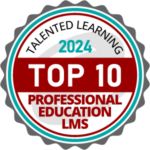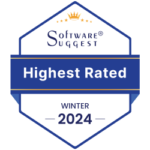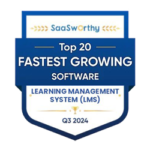Remote Workforce Training LMS
Businesses with teams dispersed across the globe want an omni-channel learning management system to learn and engage with fellow team members within the organization. Advanced remote workforce training is the need of the hour to facilitate remote work culture and ensure employee learning engagement. These training sessions help employees get new product updates, module training, regional compliance training, HR processes, language training, etc., essential for their growth and professional development. MapleLMS is a role/function-specific remote workforce training LMS that is capable of accommodating the evolving needs of any organization across diverse locations and time zones.

Demo




What do you gain?
-
Simplified Use
Our LMS platform is easy to use both for trainers and administrators (even non-technical users), who are responsible for managing remote training sessions. Easy accessibility enables the managers to access the downloaded reports and track performances effortlessly. -
Maximum Accessibility
Remote work culture is effective, only when your employees can easily access remote training at any time, from anywhere, and on any device. MapleLMS enables them to learn with fun at their convenience. -
On-time Report Tracking
Get a timely reports of your employees' learning activities with integrated analytics. This helps you track their learning patterns and understand the learning goals. As a result, you can enhance the future learning experience for them. -
Maximum Engagement
Our learning management system offers the best online training platform that supports multiple content formats, such as videos, audios, PDFs, PowerPoint presentations, slides, and text. MapleLMS comes with a gamified learning platform that enables your workers to learn with fun, view activities, certificates, credits, and points on the dashboards.
Automated Process
Tracking
How Does MapleLMS Promote Remote Workforce Training?
Anywhere, Anytime, Any Device
MapleLMS App
Highly Secure
Gamification
Easy Integrations
FAQs -
Remote training software is an application that supports training learners through digital modes of communication. It is otherwise known as a learning management system (LMS) that organizations use to train, share content, assess, and track the progress of learners. Mobile apps and web browsers connect the learners with instructors, and enable them to access online and offline training or learning. Learners can access the learning material from anywhere in the world at their convenience.
There is a varied range of content formats supported by an LMS. You can either create textual and image-based presentations, record audiovisual presentations, PDFs, and share on the platform that learners can access at any time. You can also deliver live sessions that learners get to take part virtually, using their mobile devices and laptop or computers.
You can even conduct employee training sessions through the LMS remotely. Once the new hires are registered in your HRMS or any other third-party application (like Salesforce or Zoho) you are using. The application needs to be integrated with the LMS. Then the training software or LMS gets automatically synced with the new hires’ data and sends them onboarding training and orientation invitations. Now, they can also access the existing offline training content depending on their roles.
The most robust features of a remote training software include – interoperability with other LMSs due to SCORM, xAPI, and AICC content standard support, AI-enabled learning path suggestions and learning progress tracking, reporting and analytical capabilities, online and offline (in-app network-independent) learning, integration capabilities with third-party applications (ERP, CRM, HRMS, AMD, etc.), AI-enabled online proctored exams, integration with webinar and event management apps, non-dues revenue generation for associations, branding and selling white-labeled LMS, merchandising, content and training course selling, and the capability to manage a large number of learners across multiple time zones on any digital device.
The basic purpose of remote training software or a remote workforce training LMS is, delivering training, management of learning programs and data, and assessment capabilities to organizations for a wide number of learners, remotely. It cuts cost, reduces manhours, automates processes to ease the burden from admins while offering the best learning experience to workforces. The software also tracks learning data through reports and analyzes them for improving the future learning experience.











